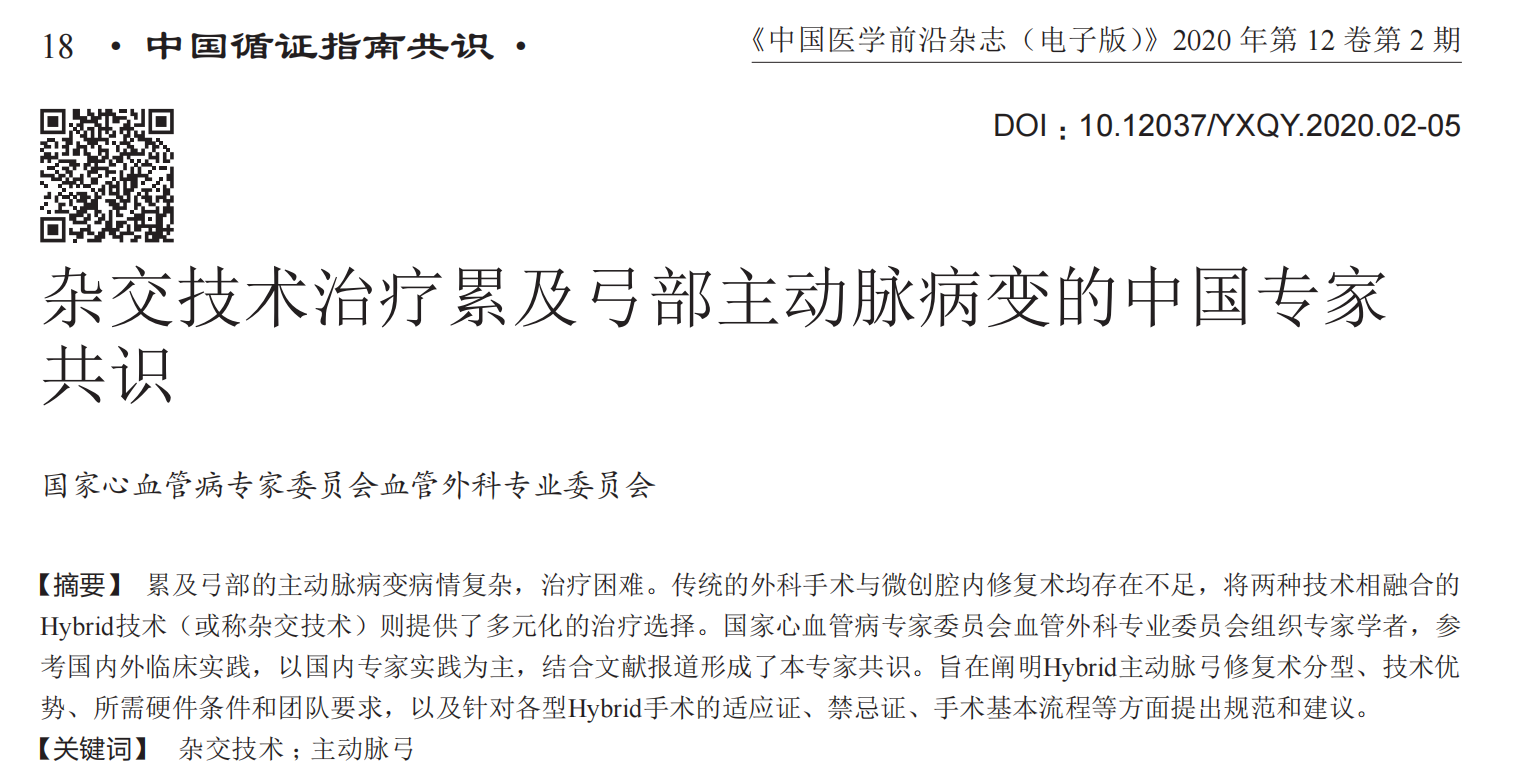
Introduction
The final meeting of the Asian Expert Consensus on the Treatment of Aortic Lesions Involving the Arch by Hybridization Technology will be held on September 22, 2023! The conference will be held in the form of a combination of online and offline conferences, which will bring together experts and scholars in the industry to discuss the principles of standardized and practical application of hybrid surgical technology, improve the level of standardized diagnosis and treatment, and benefit the majority of patients.
01.Aortic lesions involving the arch mainly include dissection and aneurysm, which can be combined with or without lesions of other parts of the aorta. However, for patients with advanced age, high risk, and complex comorbidities, traditional surgical procedures still have high perioperative mortality and morbidity. On the other hand, endovascular aortic repair can avoid or reduce surgical operations such as dissection and exposure of aortic lesions, greatly reducing the degree of trauma, and has shown great advantages in clinical practice. However, due to the lack of effective anchoring area for endoluminal stent grafts, a single thoracic aortic stent graft isolation technique cannot achieve the therapeutic purpose due to aortic dissection and aneurysms involving important branches. The structure of the aortic arch is special, and the treatment effect of related endovascular auxiliary techniques (including chimney technology, fenestration technology, and branch stent technology) is restricted by the experience and learning curve of the operator, and there is a lack of long-term follow-up evidence, and there is the possibility of short/long-term adverse outcomes such as vascular reverse tear, endoleakage, and branch occlusion. Therefore, the endovascular technique is not suitable for comprehensive application in the treatment of aortic arch lesions.
The hybrid technique (also known as "hybrid or hybrid surgery"), which combines open surgery with minimally invasive endovascular repair, provides a variety of treatment options and has been shown to significantly improve the success rate of surgery. Professor Shu Chang, Director of the Vascular Surgery Center of Fuwai Hospital, Chinese Academy of Medical Sciences, and many domestic experts compiled the "Chinese Expert Consensus on the Treatment of Arch Aortic Lesions Involving Arch by Hybridization", which was officially published in February 2020, helping to improve the clinical diagnosis and treatment level of domestic front-line physicians.

The "Chinese Expert Consensus on the Treatment of Arch Aortic Lesions Involving Arch by Hybridization Technology" edited by Professor Shu Chang et al. was officially published in February 2020
02.At present, there are no guidelines or expert consensus on the appropriate use of the hybrid surgical technique in Asia. In order to enable clinicians to have a comprehensive understanding of hybrid surgical technology, standardize diagnosis and treatment behaviors, and provide strong support for clinical decision-making, the final draft of the "Asian Expert Consensus on the Treatment of Arch Aortic Lesions Involving Arch by Hybridization" jointly initiated by the Zhongguancun Precision Medicine Foundation and Professor Shu Chang, Director of the Vascular Surgery Center of Fuwai Hospital, Chinese Academy of Medical Sciences, will be held concurrently with the CVC Conference on September 22, 2023.
At this final meeting, the "Asian Expert Consensus on the Treatment of Aortic Lesions Involving the Arch by Hybridization Technology" will enter the final review link. This round of final review will be conducted by a professional team composed of a number of cardiac surgery experts at home and abroad, and the participating experts will deeply discuss the key points in the consensus, and make final revisions and improvements to ensure that the consensus is scientific, standardized and authoritative.
The imminent release of the "Asian Expert Consensus on the Treatment of Arch Aortic Lesions Involving Arch Disease" marks another important step in the development of hybrid surgical technology in Asia, which will provide clinicians in Asia with more accurate and practical guidance treatment techniques, and also bring safer and more effective medical services to patients.


